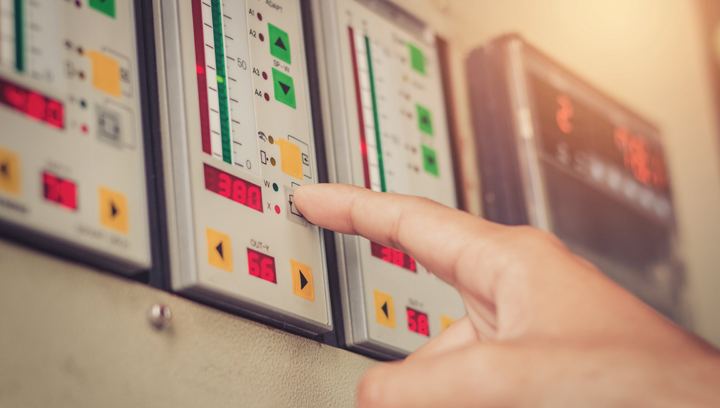BEYOND THE FACTORY FLOOR

POWER RESISTORS AREN’T ONLY FOR INDUSTRIAL PLANTS
While many of us probably have a vague idea of a resistor’s function, you most likely think of them as part of an industrial plant or large-scale operation. In reality, you’re never too far away from this essential power component. Mark Barfield, engineering and R&D manager, explores the range of applications for industrial resistors.
In electronic circuits, resistors are used to reduce current flow, adjust signal levels, divide voltages and handle unnecessary influxes of power. High-power resistors that can dissipate large quantities of electrical power as heat have uses as part of motor controls, in power distribution systems or as test loads for generators.
To anybody that doesn’t possess an in-depth and technical knowledge of a resistor’s function, it may be difficult to understand how these applications are important to everyday functions.
UP AND AWAY
While a DBR may seem like a standard piece of elevator equipment, its design demands a number of variables in order to keep the lift safe and functioning. Key considerations include calculating the energy per stop, the duty cycle and the ohmic value. Once these factors have been determined, the resistor manufacturer can determine the required DBR peak and average power in order to produce the right DBR for the job.
Dynamic braking resistors (DBRs) are an essential component in elevator operations, where speed control is essential. Without them, the elevator mechanism wouldn’t slow down in the time determined by the drive, risking the lives of its passengers. When elevators and lifts descend, there is excess potential energy that usually drives the lift’s motor in reverse, making it operate like an alternator. But an alternator is responsible for charging and powering electrics, such as in an automotive charging system. This is far from what we want an elevator’s motor to do — we definitely don’t want the carriage to speed up during its descent — so this excess energy must be dissipated safely so that the elevator doesn’t descend too quickly and cause harm.
ALL ABOARD
Stopping a train also requires the dissipation of a vast amount of energy. Conventional disc brakes alone suffer a lot of wear, so dynamic braking is often used as an additional braking system to absorb the high amounts of energy generated by stopping electric trains.
Railway braking resistors operate in the same way as those on elevators. However, electrified railways also benefit from regenerative braking, where the power produced during braking is either immediately reused by other locomotives or is stored for later use. This method is particularly beneficial for intensively used underground rail services, as the generated power can be immediately fed back into the next approaching train.
Crowbar resistors, such as those supplied by Cressall, are another resistor type commonly found track side. These resistors are used in traction power supply circuits to deal with the effects of transient or longer lasting over-voltage conditions. A soft crowbar pulses to dissipate transient over-voltages, then if these persist or worsen the main breakers are opened and the system is short circuited using a hard crowbar to absorb the stored energy.
POWER PROTECTION
Power cuts are an inconvenience to anyone, at almost any time of day. But there are some buildings that cannot afford even a couple of minutes of blackout time. Take the care industry, for example. If a hospital was to plunge into darkness, surgery would be suspended, life-sustaining equipment would cut off and vulnerable patients would be placed at risk.

As a result, every hospital has a standby power supply plan in place in case of a power cut, so that the building never has to go a second without. A battery-powered uninterruptible power supply (UPS) can instantaneously take over if the regular power supply fails. In addition, most hospitals also have a diesel generator that kicks in when there isn’t a power supply from the grid. However, our fortune that power cuts are a rarity in the Western world can also be the generator’s downfall — it never has the opportunity to prove its power.
To make sure hospital generators are able to operate during power cuts, their efficiency must be tested using a fixed load bank. The load bank allows the building manager to verify the performance of emergency backup generators without interrupting ordinary power operations by regularly running on sets of at least 25 per cent of the generator’s rated power for 10-20 minutes. Running on load uses up expensive fuel, so the appropriate load for routine testing is the lowest one for the shortest time that will ensure the diesel and its ancillaries are brought up to their full working temperature.
Cressall’s load banks for fixed installations are designed as a stage bolt-on addition to the generator set, requiring a space of only 40–800 millimeters (mm) between the radiator and the acoustic splitters, making them an easy addition during any initial generator set up. Load banks are now easier than ever to operate thanks to features such as touch screen controllers and ethernet connectivity.
While power resistors may seem as though they belong in large, industrial operations, it’s never too difficult to identify where they are required in everyday life. Without this important piece of electrical equipment, many of our services that require power in order to function simply wouldn’t be safe and usable.

